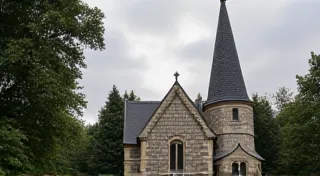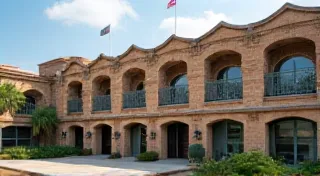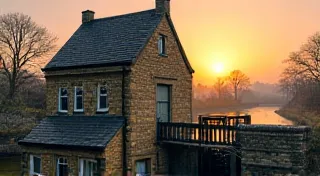The Pioneer Farmstead: Life in the Early Days
Nestled within our region, the remains of the Old Henderson Farmstead stand as a silent testament to the tenacity and resourcefulness of the early settlers. More than just crumbling stone walls and overgrown fields, it offers a glimpse into a life vastly different from our own – a life intertwined with the rhythms of nature, defined by hard work, and punctuated by the constant challenges of establishing a new home in a wild and untamed land. Understanding this period in our region's history helps illuminate the evolution of our community, much like the story told by the County Courthouse, a central pillar of justice and civic life.
A Foundation of Hard Work
The Henderson Farmstead, established in 1848, exemplifies the typical homestead of the time. Farming wasn’t a profession; it was a way of survival. The Hendersons, like other families in the area, relied entirely on their ability to coax sustenance from the land. The initial years were the most grueling. Clearing the land of dense forest required immense physical effort - felling trees, removing rocks, and preparing the soil for planting. Their fields weren’t meticulously planned; they were carved out of the wilderness, often with a desperate urgency. The physical toll on families was immense, and the need for communal support and shared resources was paramount. This necessity often led to the development of vital community spaces, such as the Workers' Hall, serving as gathering places for shared labor and social connection.
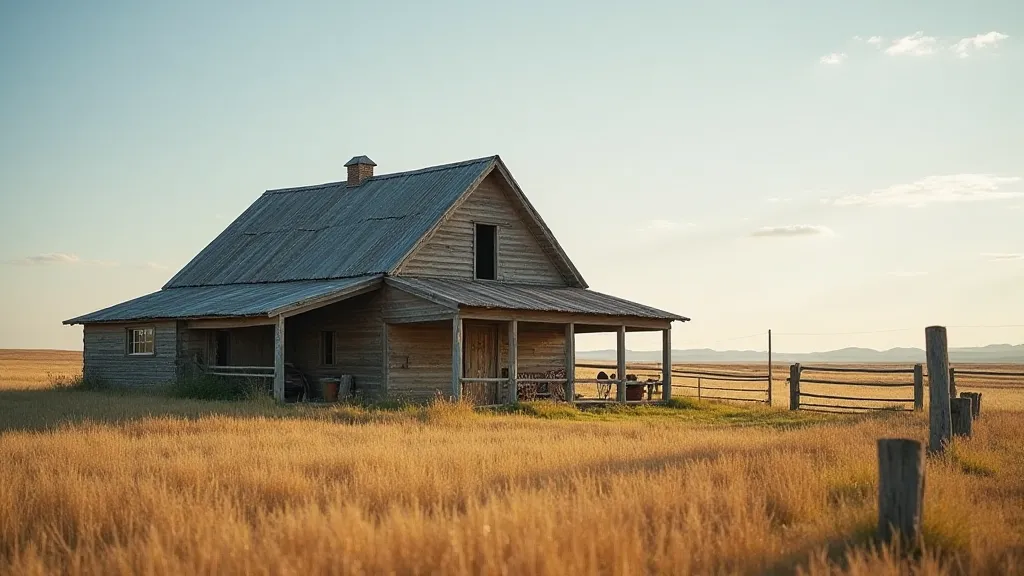
The Buildings: Simple and Functional
The architecture of the farmstead reflected the immediate needs of the family. The main house was a simple, one-story structure, typically built from locally sourced materials – timber, stone, and clay. Windows were small, to retain heat in the harsh winters, and doors were solid, providing protection from the elements and potential threats. Other essential buildings included a barn, used for livestock and storage of hay, and a smokehouse, vital for preserving meat for the long, lean winter months. The barn itself wasn’t just a structure; it was a vital link within the community, often being the site of shared labor and social events. The design wasn't about aesthetics; it was about providing shelter, security, and a place to conduct the daily routines of farm life. The need to transport goods and people across difficult terrain often spurred the development of infrastructure, such as bridges, connecting communities and facilitating trade – similar to how the historic bridge once played a vital role in regional connectivity.
Daily Life: A Cycle of Labor
Life on the pioneer farmstead revolved around a relentless cycle of labor. From dawn till dusk, every member of the family contributed. Men focused on the heavier tasks – plowing, planting, harvesting, and building. Women managed the household, tended to the garden, cared for children, and processed food, often with minimal tools. Children, even at a young age, were expected to assist with chores, demonstrating an early understanding of the importance of hard work and self-sufficiency. The isolation inherent in pioneer life meant that reliance on neighbors was crucial for support and assistance. Maintaining communication and ensuring the efficient movement of people and goods were constant challenges, contributing to the need for improved transportation systems that ultimately connected the region – a need that mirrored the efforts surrounding the establishment of the railway station.
Challenges and Resilience
Settling new lands was not without significant challenges. Harsh weather conditions, unpredictable harvests, disease, and occasional conflicts with wildlife were constant threats. Isolation was another defining characteristic of pioneer life. Communication with the outside world was slow and infrequent, and reliance on neighbors was crucial for support and assistance. Beyond the immediate agricultural challenges, pioneers also faced legal and social complexities that demanded formalized institutions – institutions that grew alongside structures like the County Courthouse. The need for a central location for these functions often shaped the development of early settlements.
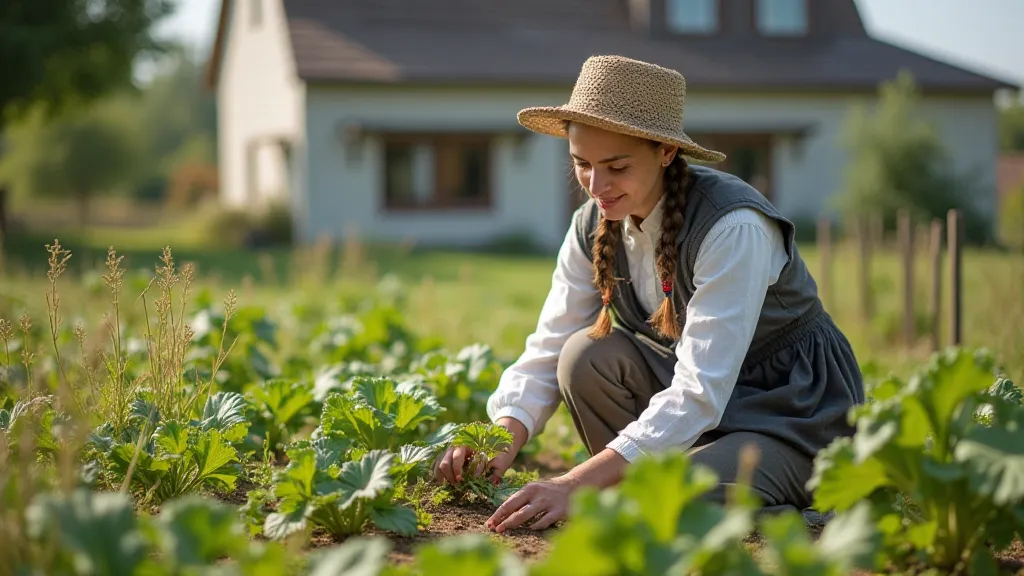
Beyond the Farm: Community and Connection
Despite the hardships, pioneer communities fostered a strong sense of camaraderie. Barn raisings, quilting bees, and church gatherings provided opportunities for social interaction and mutual support. These events were not merely social occasions; they were vital for sharing knowledge, exchanging goods, and reinforcing the bonds that held the community together. The collective effort required to overcome obstacles fostered a sense of shared identity and purpose, strengthening the social fabric. The need for designated spaces for these gatherings led to the construction of community buildings, offering a place for meetings, celebrations, and shared experiences, much like the role served by the Workers' Hall.
The Importance of Infrastructure
The development of a successful farmstead wasn’t solely about the physical buildings or the land itself; it was inextricably linked to the infrastructure that supported it. Early settlers needed to get their goods to market, access medical care, and connect with other communities. The establishment of roadways, bridges, and later, railway lines were all vital components of the region’s growth. The physical challenges of moving goods and people across difficult terrain highlighted the importance of collaboration and ingenuity, fostering a culture of mutual aid within the pioneer communities. Without reliable transportation, the prosperity of the farmstead, and the entire region, would have been severely hampered.
Lessons in Sustainability
Looking back at the lives of the early settlers, we can draw valuable lessons about sustainability and resourcefulness. They lived in harmony with the land, relying on natural cycles and minimizing waste. Every part of an animal was used, every scrap of fabric was repurposed, and ingenuity was the key to survival. The concept of "make do and mend" was not just a saying; it was a way of life. Modern society, with its focus on consumerism and disposability, could learn a great deal from the pioneering spirit of self-sufficiency and respect for the environment. The farmstead, in its entirety, represented a sustainable model of living, demonstrating a profound understanding of the interconnectedness between humans and the natural world.

Preserving the Legacy
Today, the remnants of the Old Henderson Farmstead stand as a poignant reminder of the sacrifices and triumphs of those who came before us. While the original buildings have largely succumbed to time, the story they tell – the story of resilience, ingenuity, and the enduring human spirit – continues to resonate. Efforts are underway to preserve the site, educating future generations about the challenges and rewards of pioneering life and reminding us of the foundations upon which our region was built. Understanding the complete historical context requires consideration of the institutions that developed alongside the farmstead, contributing to the overall advancement of the community – from the County Courthouse to the Railway Station. The story of the farmstead is interwoven with the broader narrative of our region’s progress, illuminating the vital contributions of countless individuals who shaped our present.
A Continuing Story
The Old Henderson Farmstead isn’t just a relic of the past; it’s a living testament to the enduring power of the human spirit. The challenges faced by the early settlers – the relentless labor, the unpredictable weather, the isolation – shaped their character and forged a deep connection to the land. By preserving and interpreting these sites, we ensure that future generations understand the sacrifices and triumphs that built our region. And as our own society grapples with its own set of challenges, the lessons of the pioneers – their resilience, their ingenuity, and their commitment to community – remain as relevant as ever. The ongoing effort to document and understand the evolution of our region mirrors the historical commitment to the preservation of structures, like the historic bridge, that formed the vital arteries of communication and connection.
